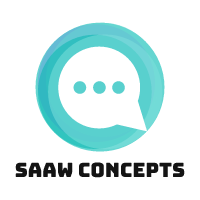Introduction
In today’s digital world, video content has become one of the most powerful marketing tools. With its ability to convey information, entertain, and engage audiences, video has the potential to drive traffic to your website and boost conversions. However, simply creating high-quality video content is not enough. To maximize its impact, you need to strategically schedule when and where your videos will be published.
Why is Video Content Scheduling Important?
Scheduling your video content effectively can have a significant impact on audience engagement and ultimately drive traffic to your website. Here are some reasons why video content scheduling is crucial:
- Reach the Right Audience at the Right Time: By scheduling your videos at specific times, you can ensure that your target audience is more likely to see them. Analyze the demographics and online behavior of your audience to determine the optimal time for maximum reach and engagement.
- Build Anticipation: By scheduling video releases in advance, you can generate anticipation among your audience. This can lead to increased sharing and buzz, driving organic traffic to your website.
- Consistency and Regularity: Regularly scheduling videos helps you establish a routine with your audience. Consistent releases build trust and loyalty, encouraging your audience to visit your website regularly.
Tips for Effective Video Content Scheduling
To optimize audience engagement and drive traffic to your website, consider the following tips when scheduling your video content:
- Identify Your Target Audience: Conduct market research to understand your target audience’s preferences, habits, and online behavior. This will help you determine the best times to release your videos.
- Create a Content Calendar: Plan your video releases in advance by creating a content calendar. This will help you maintain a consistent schedule and avoid last-minute rushes.
- Consider Different Time Zones: If your target audience is spread across different time zones, schedule your videos to accommodate their local times. This ensures maximum visibility and engagement.
- Analyze Performance Metrics: Regularly monitor and analyze the performance metrics of your video content. This will help you identify trends, understand what works best for your audience, and make informed decisions for future scheduling.
- Promote and Share: Once you’ve scheduled your videos, don’t forget to promote and share them across your various marketing channels. Utilize social media, email newsletters, and other platforms to drive traffic to your website.
Conclusion
Video content scheduling plays a critical role in optimizing audience engagement and driving traffic to your website. By reaching the right audience at the right time, building anticipation, and maintaining consistency, you can maximize the impact of your video content. Remember to identify your target audience, create a content calendar, consider time zones, analyze performance metrics, and promote your videos to ensure the best results. By implementing these strategies, you can leverage the power of video to significantly enhance your online presence and attract more visitors to your website.
